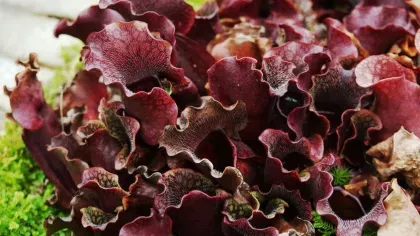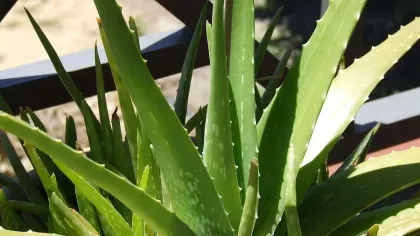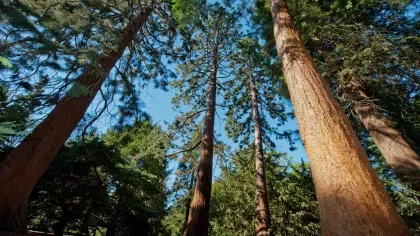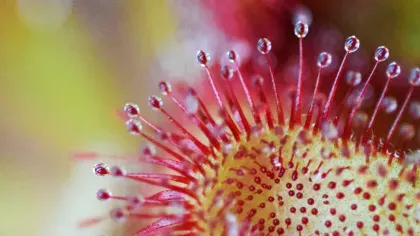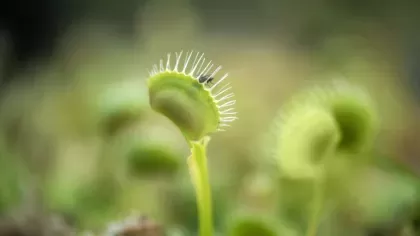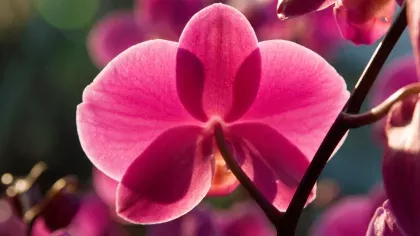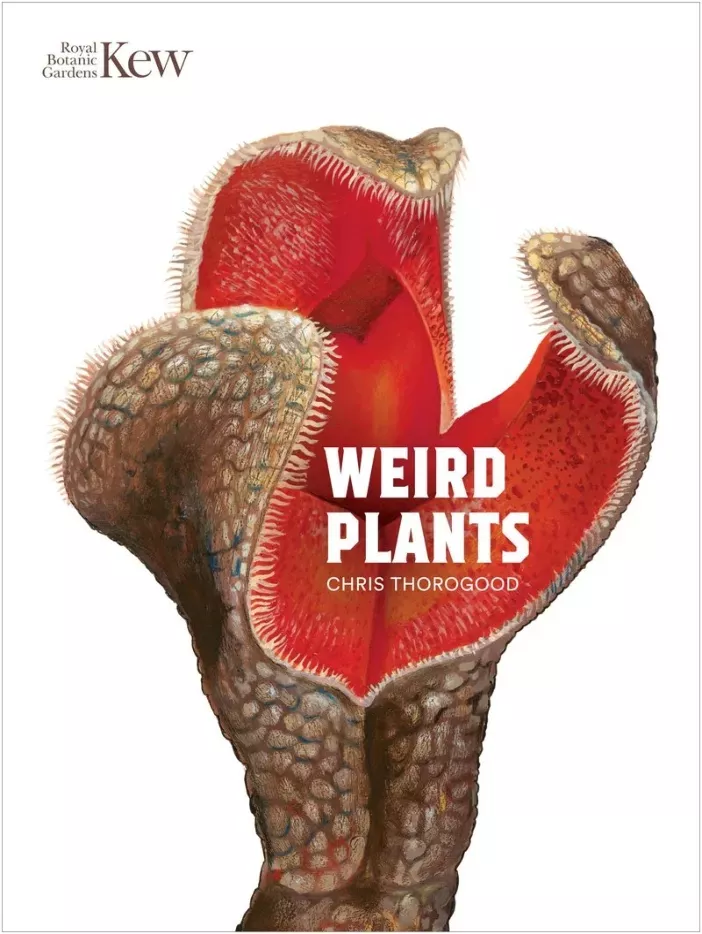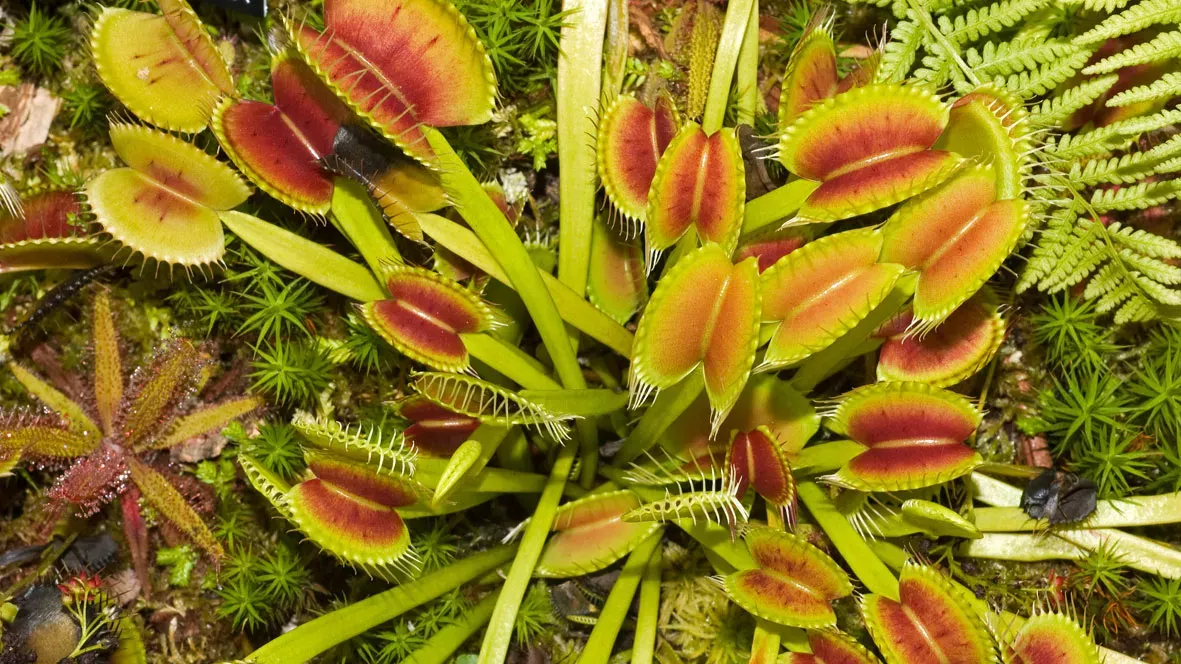
Venus flytrap
On this page
The Venus flytrap is a feisty, flesh-eating plant with toothed leaves like snapping-jaws that trap and devour insects and spiders.
They live in nutrient-poor soils so rely on their elaborate traps for food.
When an insect lands and bumps into tiny trigger hairs on the inner surface of a Venus flytrap’s leaves, they snap shut and the interlocking teeth seal the trap shut.
The leaves then close tighter, squashing the prey, which is then digested by enzymes into a nutritious soup.
Venus flytraps are only found on the East Coast of the United States where they desperately need protecting as their numbers are rapidly declining due to poaching, habitat loss and fire suppression.
Conservationists at North Carolina Botanical Garden recently banked 500 seeds from 50 wild flytraps in North Carolina to safeguard the precious species from extinction.
Venus flytraps have a good short-term memory; they only snap their leaves shut if an insect trips its trigger hairs two times within about 20 seconds.
Plant description
The Venus flytrap is an evergreen plant with rosettes of leaves. Each leaf has a flat stalk and ends in a trap. The trap has a reddish centre and is lined with teeth. It has tiny, white flowers that cluster at the top of leafless stalks. In the winter months, the Venus flytrap goes dormant; it reduces its number of carnivorous leaves and stores energy in a winter bulb.




Plant uses
Cultural
Venus flytraps are used in ornamental displays that inspire curiosity and wonder for the magical world of carnivorous plants.
Health
Venus flytraps have been shown to contain naphthoquinones, compounds that have anti-bacterial, anti-fungal, and antiparasitic properties.
Did you know?
Charles Darwin had a keen interest in carnivorous plants and described the Venus flytrap as 'one of the most wonderful plants in the world'.
The Venus flytrap is one of a very small group of plants capable of rapid movements – it can snap its leaves shut in less than half a second.
Venus flytraps rely on periodic forest fires which help suppress their competitors.
Venus flytraps attract their prey using the reddish lining of their leaves.
Where in the world?

Subtropical wetlands in wet, acidic, sandy and peaty soils that are nutrient poor. Grows in areas that receive full sun and burn frequently in forest fires.
Find it in our gardens
Kew Gardens
A botanic garden in southwest London with the world’s most diverse living plant collection.
Location
Temperate carnivorous plant zone in the Princess of Wales Conservatory.
View map of Kew GardensBest time to see
Our work
Kew experts are helping to monitor and control the international trade of threatened wild plants.
This includes the trade of Venus flytraps which are rapidly disappearing from the wild largely due to poaching.
Thousands of these unique carnivorous plants are stolen from their natural habitat by poachers despite being widely available in the horticultural trade.
Our work regulating the international trade of Venus flytraps will help protect this species from overexploitation.
